Höganäs is located in north-west Skåne, on the Kullen peninsula, and is probably for most people strongly associated with ceramics. This is also a pleasant coastal community surrounded by dramatic scenery, cosy holiday resorts and thriving Swedish vineyards.
Table of contents
Höganäs
Originally a fishing village, Höganäs developed over time, with the mining industry of coal and clay, into a centre for the production of ceramics such as the famous Höganäskrusen. Today this is also an area that attracts tourists, especially in the summer.
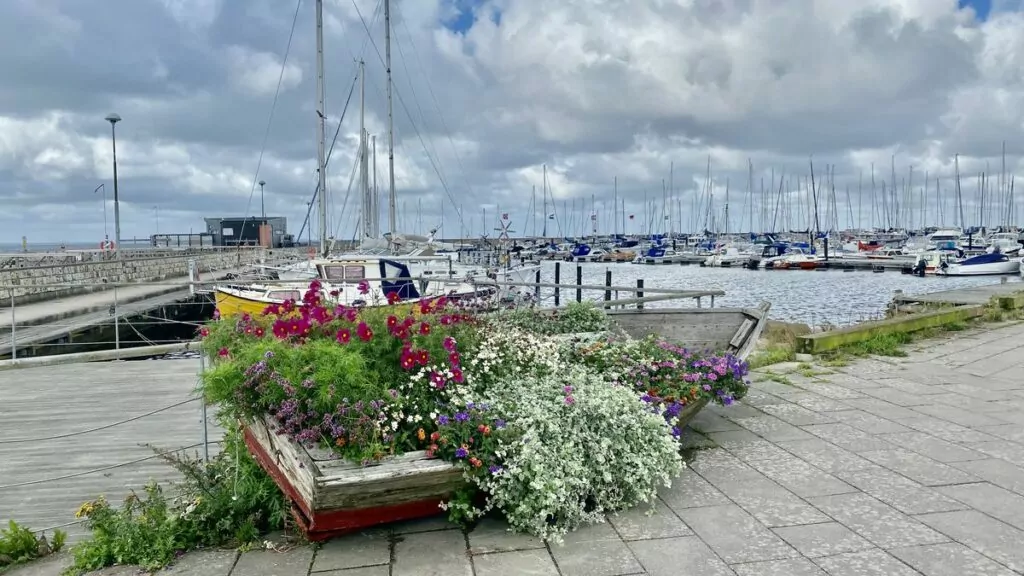
The town is located on the Kulla peninsula in northwest Skåne, about 25 kilometres northwest of Helsingborg.
Port of Höganäs
We came to Höganäs by motorhome and first drove down to the harbour, where there is a parking space for motorhomes. There are lots of nice boats that you can watch, and there is also a restaurant and a service centre.
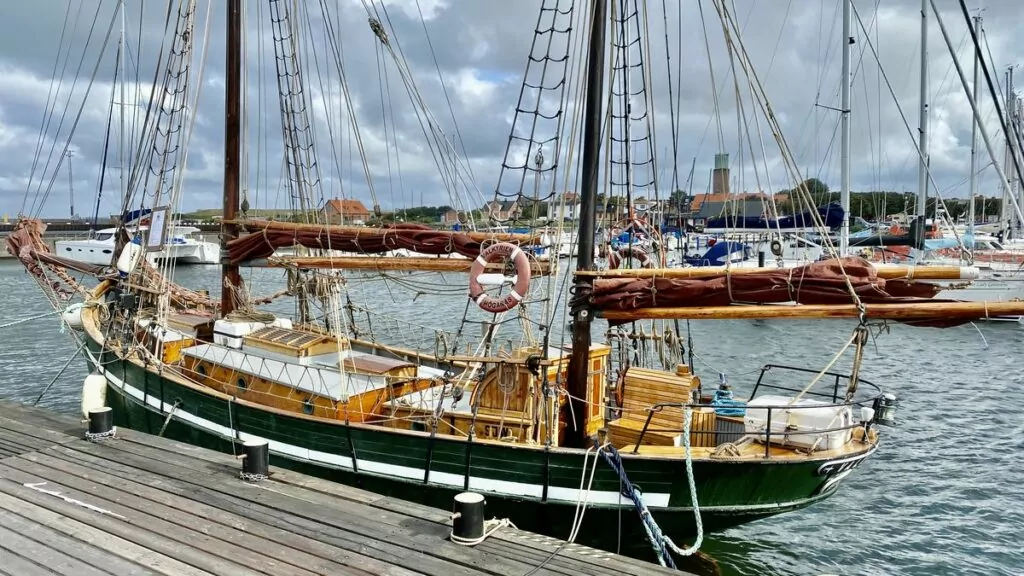
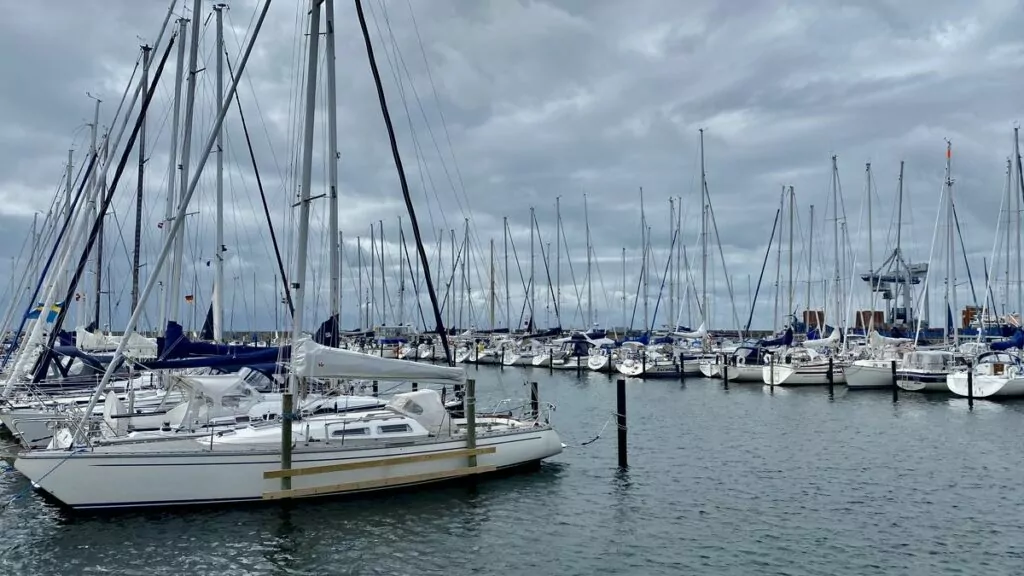
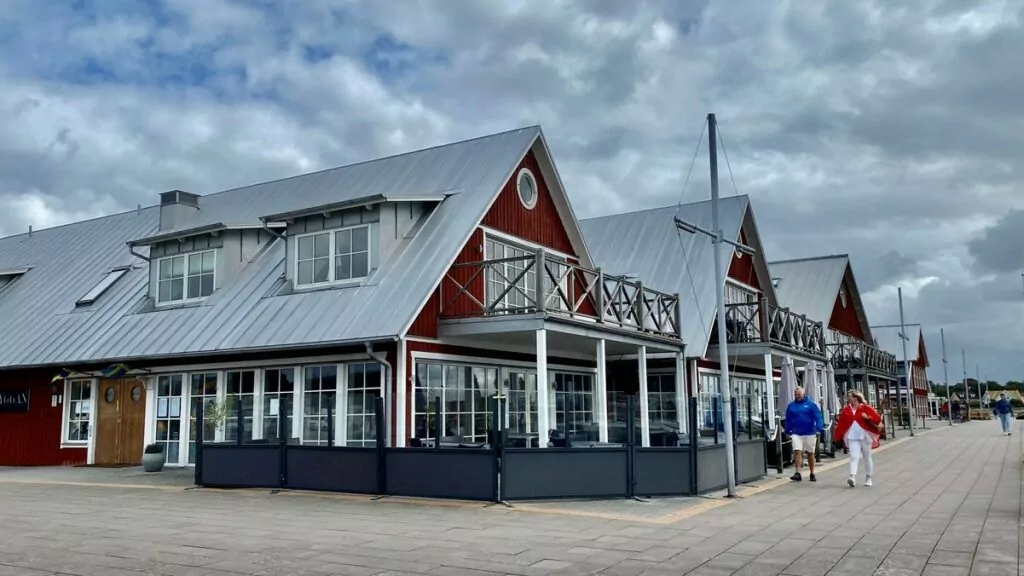
We went out on one of the piers, which was decorated with small ceramic tiles. Very nice and creative!
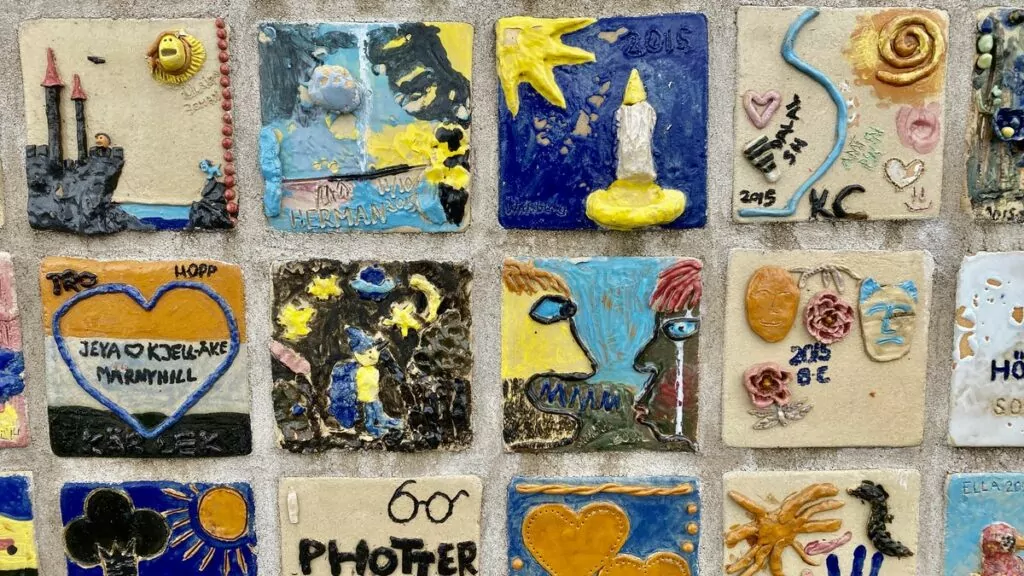
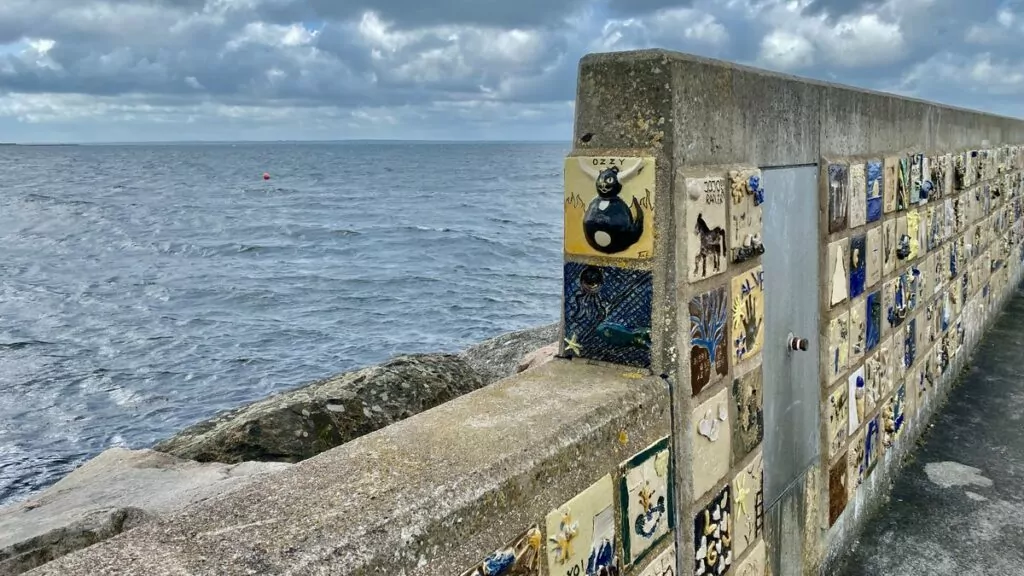
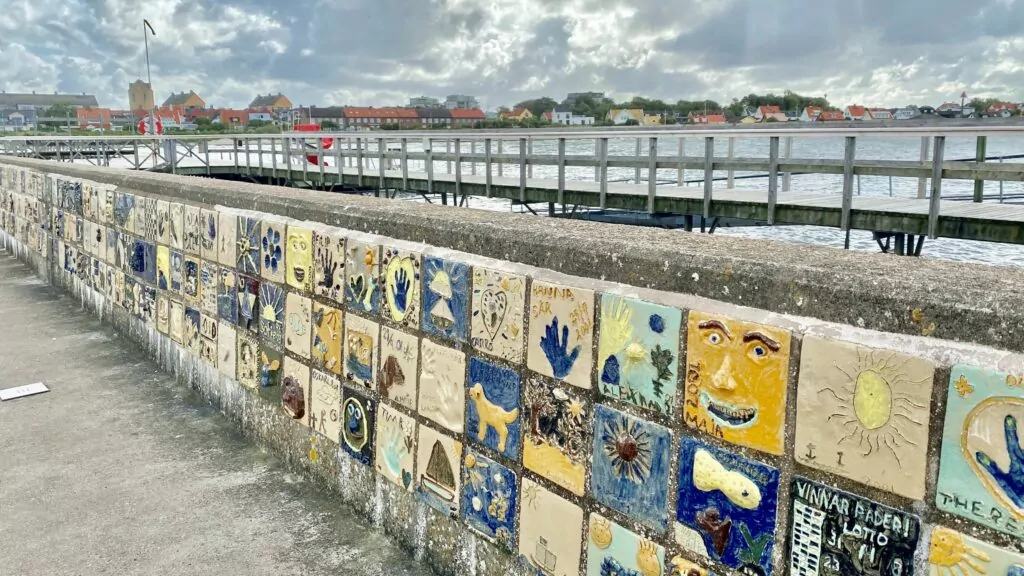
At the far end of the same pier is the artwork 'Open Hand'. Created by Kerstin Ahlgren in 2003, the sculpture symbolises the flight of Jews to Höganäs in Skåne from occupied Denmark during the Second World War. A total of around 1200 Danish Jews came to the harbour in 1943, escaping deportation to the concentration camps.
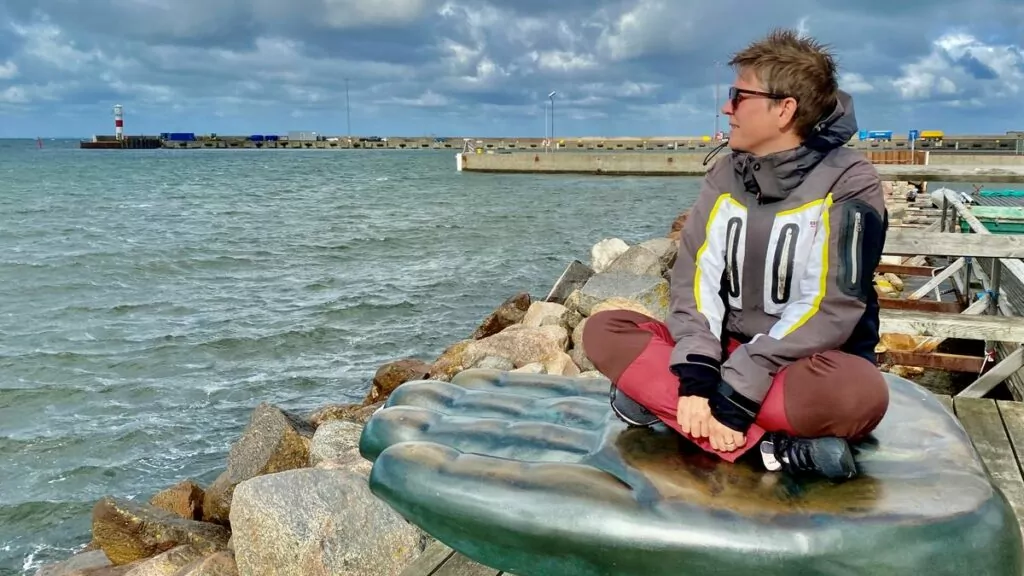
Parking space for motorhomes
In the harbour there is also a parking space for motorhomes. The site is really big and when we were here there was plenty of space. Service is available in the form of toilets, showers and the possibility of emptying and filling tanks. The price was 190 SEK / day (August 2021) and this is paid in a vending machine in the harbour. An excellent place we thought!
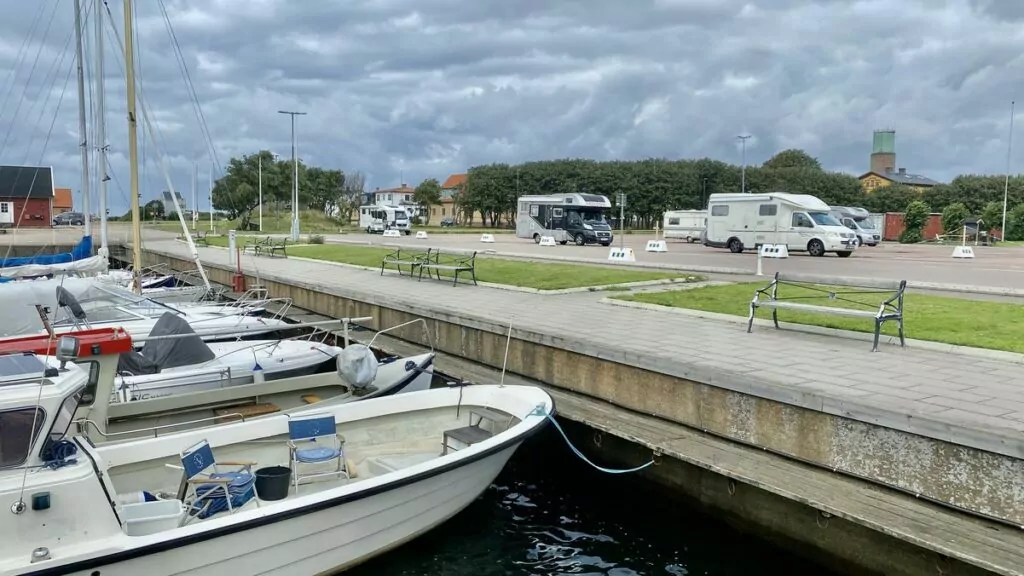
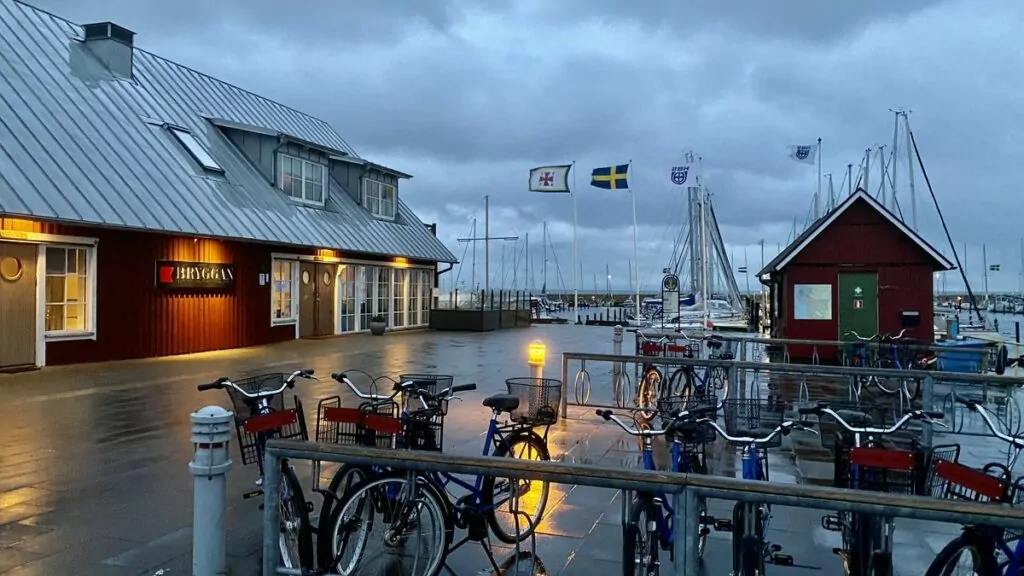
Beach and swimming
Right next to the harbour is a small sandy beach called Kvickbadet. It was not bathing weather when we were here, but the beach is nice so we can imagine that it is popular when it is warm and sunny.
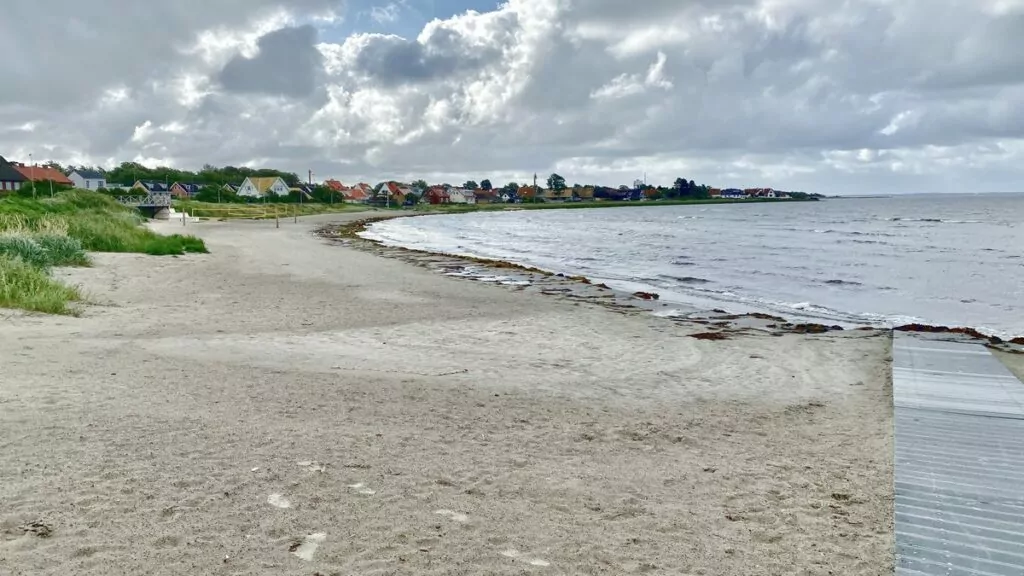
Next to the beach, on the long pier in the harbour, there is a small cold bath house where you can take a sauna with a panoramic view of the Öresund before going for a swim.
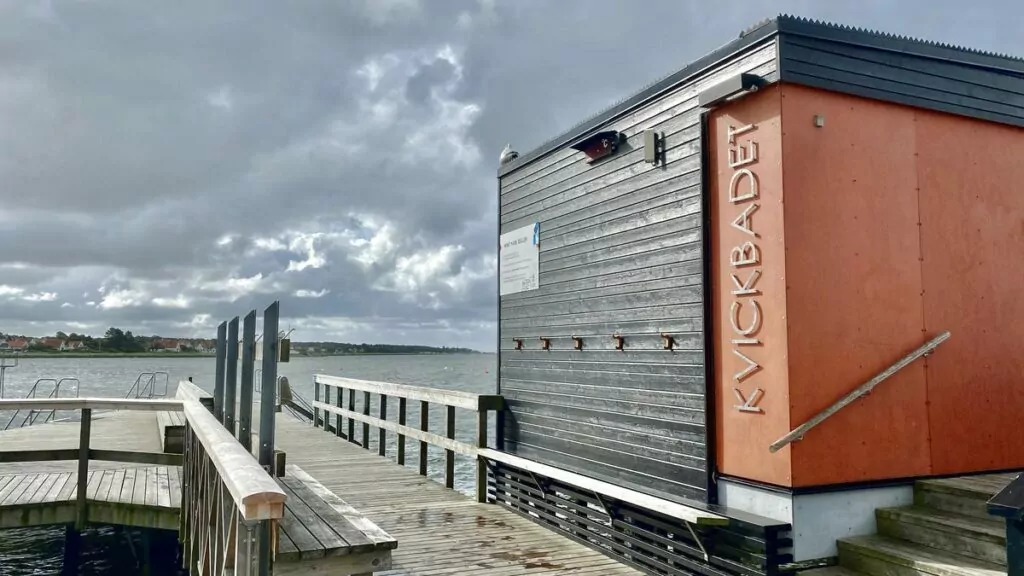
Höganäs centre
We also took a little walk in the centre of Höganäs, mostly to look around and do some errands. Here it was quiet in the morning we can say!
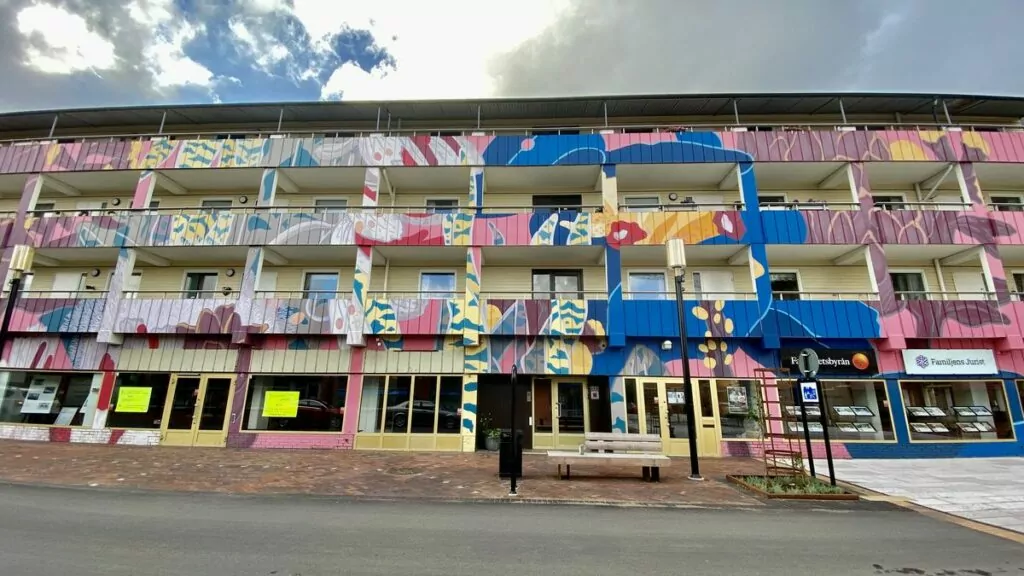
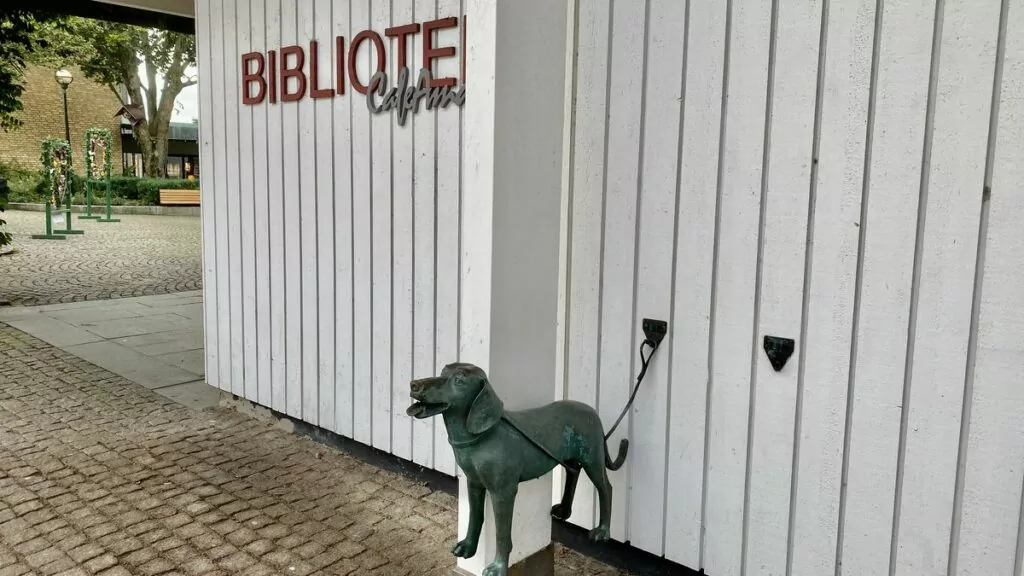
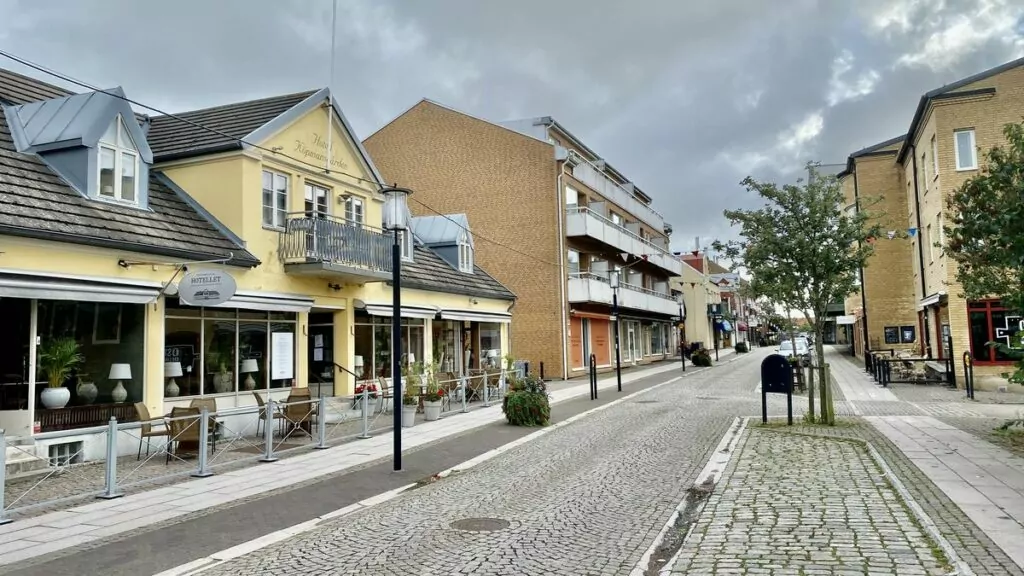
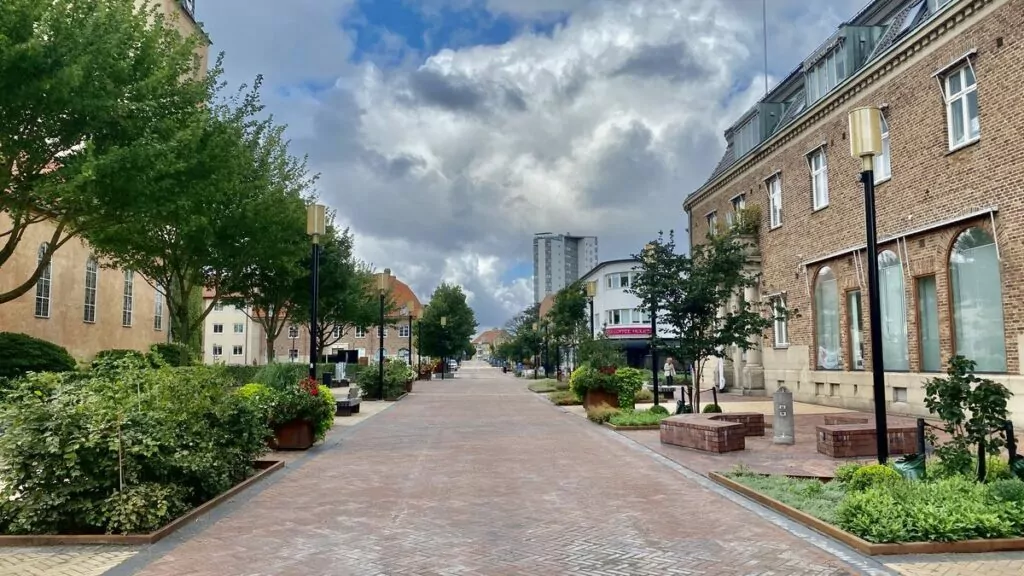
We also looked at Höganäs church (Himmelsfärdskyrkan) which was opened in 1934. A nice church with its wide tower!
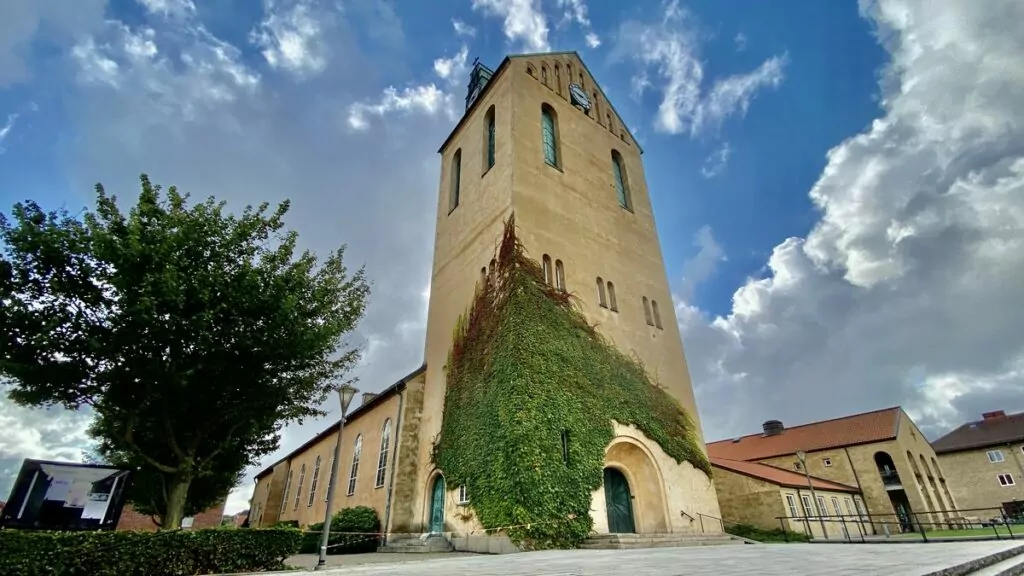
Keramikbygden Höganäs
Not surprisingly, Höganäs is strongly associated with ceramics. Ceramics have been fired here for almost two hundred years and potters, designers and manufacturers have made the name famous all over the world.
In the area, there are currently around 30 active ceramists, studios, workshops and shops where you can buy ceramics or perhaps try turning them yourself. In the main town itself, you can visit the Ceramic Centre, which is located in Höganäs Keramik's old factory, next to the Höganäs Design Outlet.
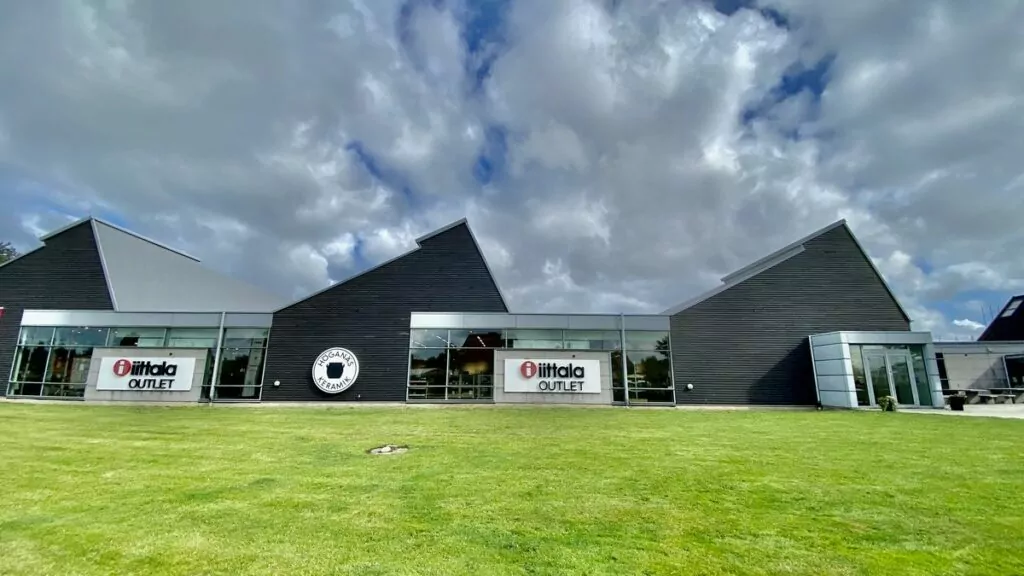
More to see and do in Höganäs / on the hill for those who like food, culture and history?
There is a lot to see and do in Höganäs in Skåne, especially if you refer to the whole municipality and the surroundings of the Kullen peninsula. For example, you can visit the towns of Viken, Brunnby, Lerhamn and Mölle. Here are some more tips for those who like food, culture and history:
- Höganäs Museum has an art gallery and displays exhibitions.
- Krapperup Castle welcomes visitors to the castle garden and there is also a café.
- Nimis is a famous work of art by artist Lars Vilks, beautifully situated on the coast and reached by a challenging walk.
- Wine tasting can be experienced at Arilds Vineyard, Kullaberg Vineyard or Södåkra Vineyard.
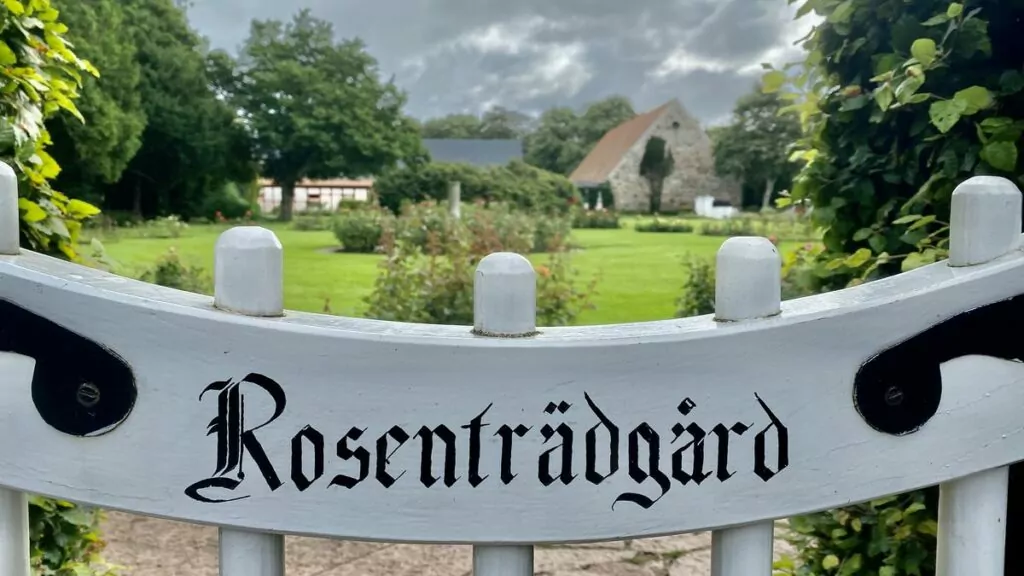
More to see and do in Höganäs / Kullen for nature lovers
There is also much to experience and do in Höganäs for those who like nature experiences. Here are some suggestions:
- Cycling can be done on the Kulla Peninsula, for example along the Kattegat Trail between Helsingborg and Gothenburg.
- Golf you can play in several places, including Höganäs Golf Club.
- Kullaberg Nature Reserve offers dramatic and beautiful scenery, as well as several exciting caves.
- Kullaleden SL5 is the Skånelenden sub-trail that runs around the Kulla Peninsula. The trail runs from Helsingborg to Utvälinge and is 70 kilometres in total.
- Mölleslingan is a 4.6-kilometre-long hiking trail past forest, sea and cultural-historical environments.
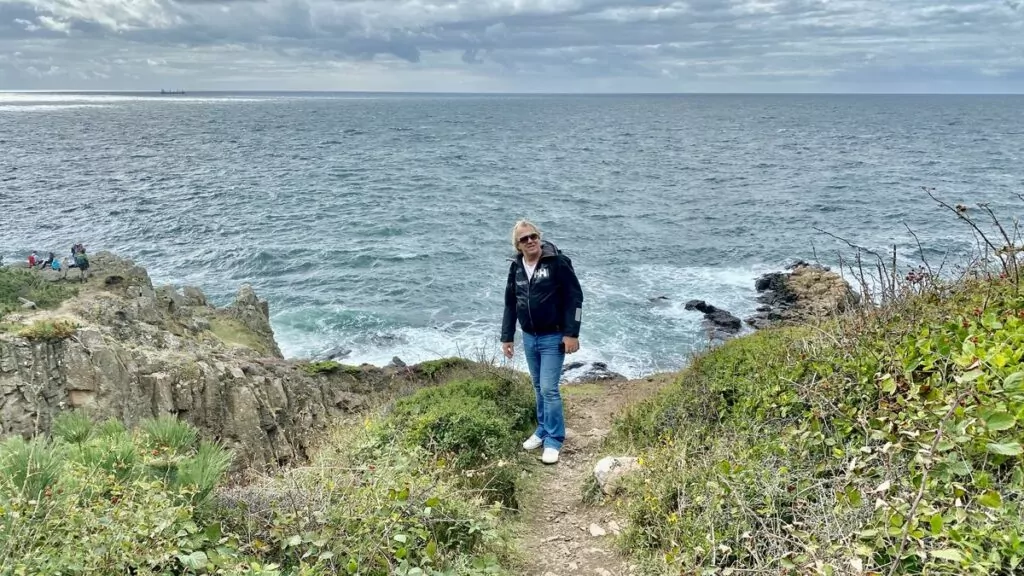
More to see and do in Höganäs / on the Hill with children
Last but not least, here are some tips on things to do in Höganäs for those travelling with children:
- Pancake barn at Ekhaga Gård offers a mini-zoo, a restaurant and activities such as cross-carting and an obstacle course.
- Tumblers can be seen in the sea around Kullaberg, and you can take RIB boat trips to experience porpoise safaris.
- Horse riding can be done with Kullaberg's Icelandic horses.
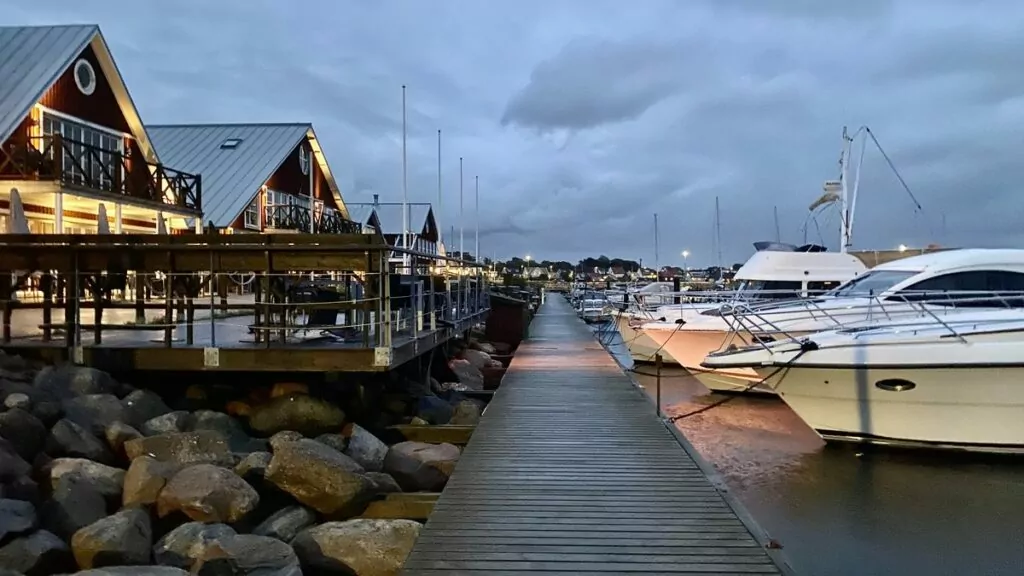
More to see and do in the neighbourhood
Want to see and experience even more in north-west Skåne? In that case, we can recommend the lovely city of Helsingborg with our 20 attractions. Here you will also find the the picturesque village of Råå, Tropical zoo with exotic animals, Sofiero castle and castle garden, Fredriksdal and lovely Ramlösa brunnspark.
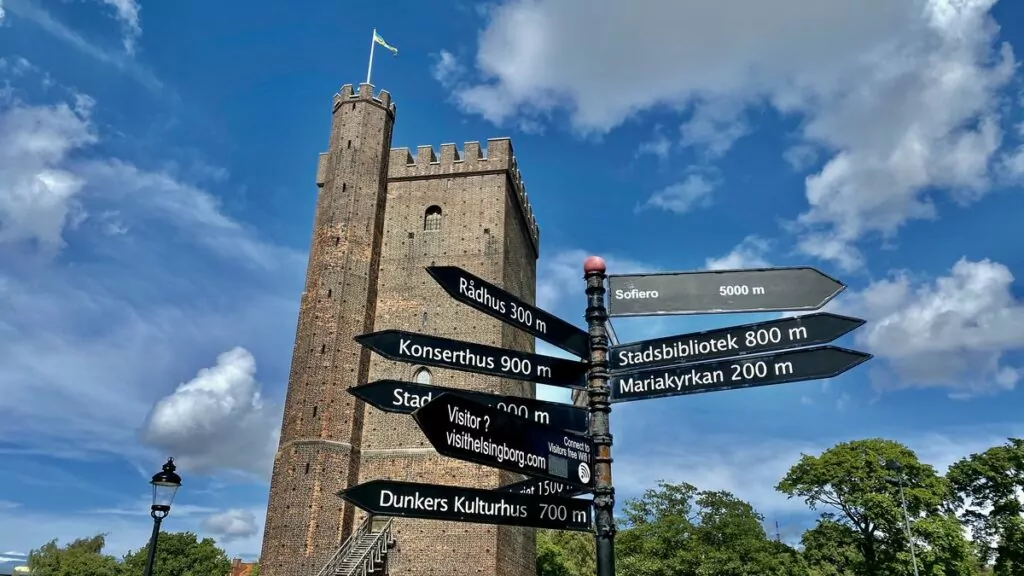
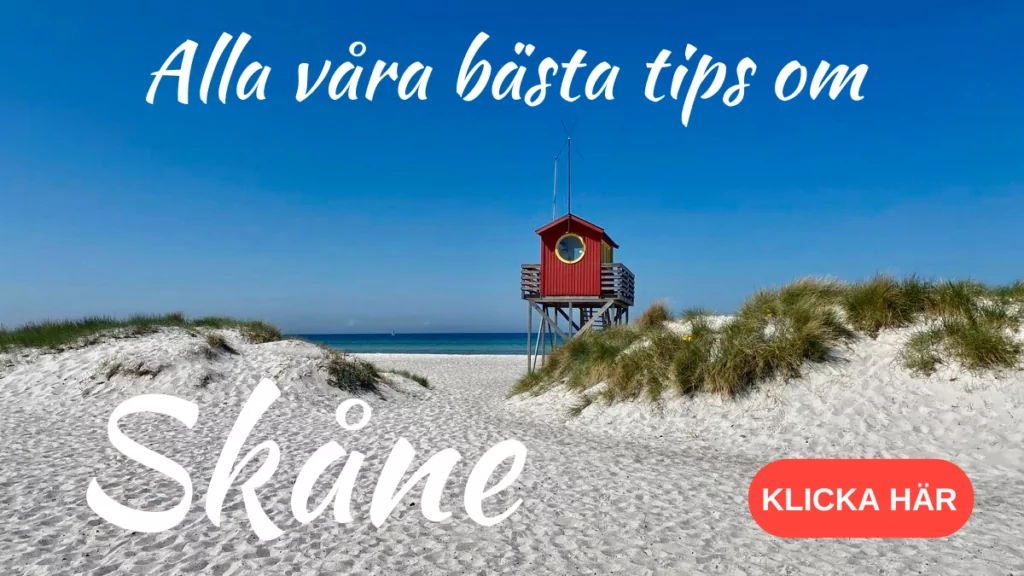
Trip to Malmö - a surprise from Peter to Helena
Writer: Helena Bergström We have made a trip to Malmö! A while ago, we declared...
An evening of music at Diggiloo in Ystad
Guest writer: Pernilla This summer, Diggiloo will play 24 concerts in 24 different cities in Sweden, in...
A day at Bongska Huset and its big sister Hotel Mossbylund
Guest writer: Pernilla Bongska The house in Abbekås is nicely located in Abbekås harbour in Skåne, near the beach...
Everyday luxury at Hotel Dannegården in Trelleborg.
Guest writers: Magdalena and Pernilla Travelling and long-distance adventures are great. Everyday luxury in your neighbourhood should...
Stationen Ystad - cosy bed & breakfast in Skåne
Stationen Ystad is a really cosy Bed & Breakfast in Skåne. Peter and his brother...
The Swedish Skåne Road - FREEDOMtravel Themed Road
Writer: Peter Bergström The Swedish Skåne Road is a themed road that takes you through Skåne,...
Things to do in Malmö - 28 sights and experiences
What to do in Malmö? This Scanian city has a lot to offer, in...
Street art in Malmö - a guide to Malmö's street art
Street Art in Malmö! It can be called street art, street art, wall paintings, murals or simply...
Disgusting Food Museum in Malmö - a "disgusting" visit
The Disgusting Food Museum in Malmö is for those who want to shudder and think "What...
With a camper in Malmö - tips on pitches and experiences
By motorhome in Malmö! We paid a visit to Sweden's third largest city with...
Things to do in Helsingborg - 20 sights and experiences
What can you see and do in Helsingborg? Helsingborg is a lovely Scanian city with...
Ramlösa brunnspark - from health resort to mineral water
Ramlösa Brunnspark in Helsingborg has a history that goes all the way back to the 17th century, when...
Fredriksdal in Helsingborg - museums and gardens
Fredriksdal in Helsingborg, or Fredriksdal Museum and Gardens, is a nice open-air museum in Skåne. Here you can...
Things to do in Ängelholm - our 9 best tips
What to see and do in Ängelholm? Ängelholm is a charming little town in Skåne...
Northeast Skåne - 6 excursions by car from Kristianstad
Writer: Helena Bergström Northeastern Skåne offers beautiful nature, charming towns and several exciting excursion destinations....
Excursions on the Bjäre Peninsula - 8 wonderful experiences
Excursions on the Bjäre Peninsula will be about today. At the risk of repeating ourselves a little ...
Kullahalvön and Kullaberg nature reserve
Kullahalvön, or Kullen as the peninsula is also called, is located in north-west Skåne. Here you will find ...
Swedish vineyards - 4 farms with Swedish wine
Do Swedish vineyards exist? Yes, they do, and Swedish wine is on the rise...
Krapperup Castle in Skåne - with castle park and coffee house
Krapperup Castle is a Scanian estate dating back to the 14th century. Today there is a beautiful castle...
Birgit Nilsson Museum - starry-eyed in the Scanian soil
Birgit Nilsson Museum tells the story of the farmer's daughter who became a world star. Sometimes reality surpasses poetry, and...
Norrviken's gardens - fantastic park outside Båstad
Norrviken Gardens, located outside Båstad in Skåne, was built at the end of the 19th century by gardening enthusiasts....
Båstad with a motorhome - are you welcome?
Båstad with a motorhome - are you welcome? Yes, you could ask yourself that. The feeling in...
Artwork Nimis - directions and interesting facts
Nimis is a fascinating artwork on the Kulla peninsula in Skåne, created by artist Lars Vilks. It...
Tropicarium in Helsingborg - exotic animals from around the world
Tropikariet in Helsingborg, Sweden, is an exotic indoor park that showcases fascinating animals from...
Sofiero castle and gardens - royal floral splendour!
Sofiero Castle and Castle Garden in Helsingborg offers a fantastic environment with intense greenery, splendour and...
Råå - picturesque in the south of Helsingborg
Råå is a charming old fishing village in southern Helsingborg. Today this is a picturesque coastal community...
Things to do in Landskrona - 12 sights and experiences
What to see and do in Landskrona? Landskrona is a pleasant town on the Öresund...
What to do on Ven in Skåne - 10 tips for a scenic island
What to see and do on Ven? This scenic island is located off the west coast of Skåne,...
Jakriborg in Skåne - inspired by the Middle Ages
Jakriborg is a residential area on the Scanian plain, just south of Lund, which looks like...
What to do in Ystad - 12 tips for experiences and attractions
What to do in Ystad? We have visited Ystad several times, but never so...
What to do in Lund - 16 tips for sights and experiences
What to do in Lund? This Scanian university town is characterised by students, research and youthful...
Dalby South Forest - Europe's smallest national park
Dalby Söderskog National Park is Europe's smallest national park. The nature area is located outside Lund in Skåne and is...
Culture in Lund - an open-air museum in the city centre
Kulturen i Lund is an open-air museum that extends over two blocks, right in the centre of...
Sandhammaren in Österlen - a beautiful sandy beach
Sandhammaren in Österlen is a beautiful sandy beach with soft, fine-grained sand, which has been...
What to do in Trelleborg - our 9 best tips
What to do in Trelleborg? Sweden's southernmost city has become known as the 'Palm City',...
Glimmingehus - Scandinavia's best preserved medieval castle
Glimmingehus in Skåne is the best preserved medieval castle in the Nordic region. Construction of the castle began in the late 15th century,...
Ales stones - an ancient mystery in Skåne
Ales stenar is Sweden's largest and best preserved shipbuilding site. The stone formation sits magnificently on a hill...
Smygehuk in Skåne - Sweden's southernmost headland
Smygehuk in Skåne is Sweden's southernmost cape. There is a small harbour, some cosy little...
Skanör - sandy beach, finger food and a blog session
Skanör is located at the bottom of southeastern Skåne and offers fantastic sandy beaches and cosy restaurants....
FRS Baltic - from Trelleborg to Sassnitz in less than 2.5 hours
FRS Baltic takes you from Trelleborg to Sassnitz in less than 2.5 hours, with its high-speed...
Kronovalls castle - a beautiful wine castle in Skåne
Kronovall Castle is a stunningly beautiful baroque castle in Österlen, Skåne. Today the castle serves as...
Kristianstad - 17 things to do and experience
Kristianstad, and the area around Kristianstad, offers everything from castles and charming farms to lovely...
Cosy accommodation in Skåne - close to nature at Cocoon meetings
In May this year we stayed one night in a fantastic cosy accommodation in Skåne....
Ivön and Bäckaskog Castle in Skåne - the hunt for the horse grave
Ivön and Bäckaskog Castle in Skåne are located just north-east of Kristianstad. We were here one...
Åhus in Skåne - a holiday resort with vodka and ice cream
Åhus in Skåne is a lovely holiday resort, which is known for its Absolut...
Absolute Home - a visit to The Åhus villa
We visited Absolut Home and The Åhus Villa in Åhus, Skåne. Here we have...
Have you visited Höganäs in Skåne? How was your experience? Do you have even more tips?
Facts about Höganäs
- Landscape: Skåne
- County: Skåne County
- Municipality: Municipality of Höganäs
- Location: On Kullahalvön / Kullen peninsula in north-west Skåne.
- District: Höganäs district, Väsby district, Brunnby district, Viken district
- Population: About 27 000 in the municipality (2021)
History in Höganäs
- 1488: The fishing village of Höyenaess was first mentioned.
- 16th and 17th century: The fishing village consisted of about 20 households.
- 18th century: During the plague years, the population declined slightly.
- 1797: Höganäsbolaget was founded when mining took off. At its peak, there were more than 50 mines here.
- 1830s: The brick and ceramics industry developed.
- 1936: Höganäs became a town
- 1961: The mining operations ended when the Prince Gustaf Adolf shaft was closed.
- 1971: The town became the capital of a large municipality.


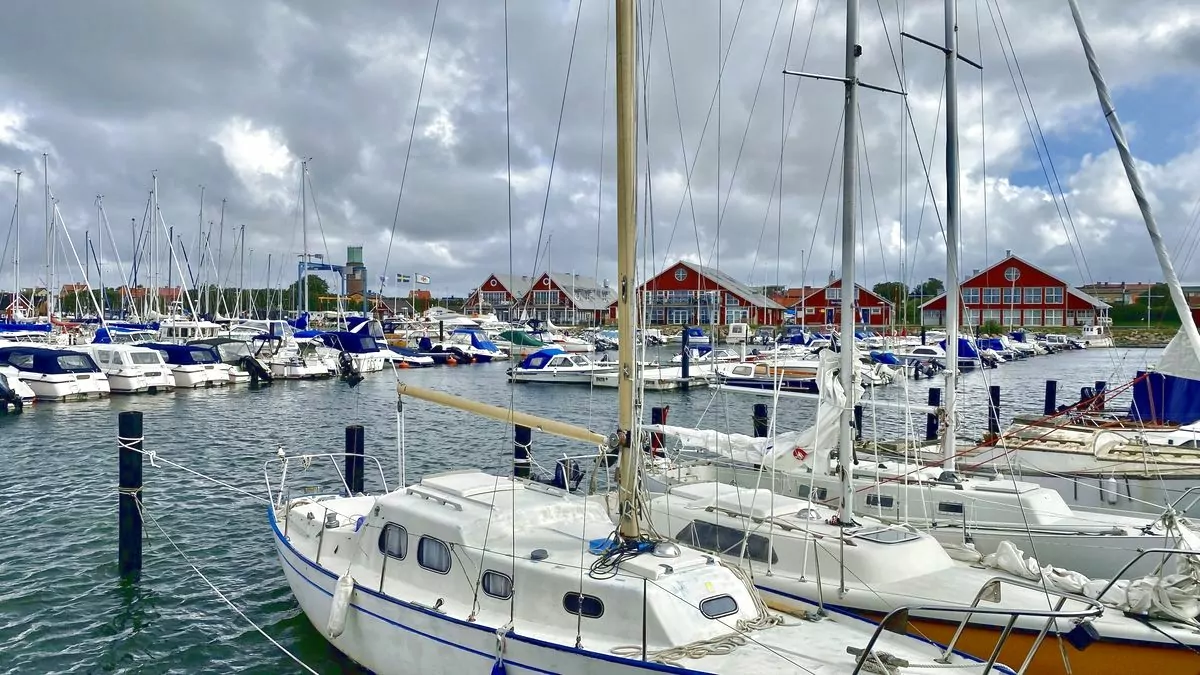






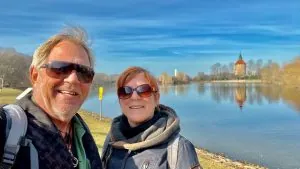

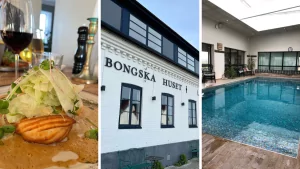
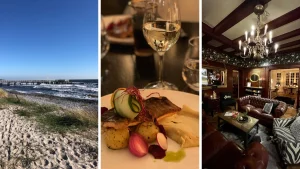
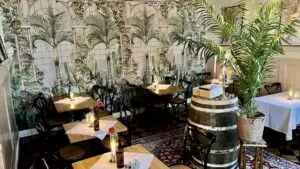
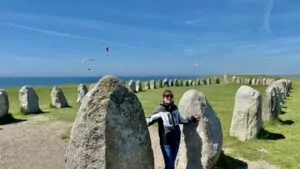
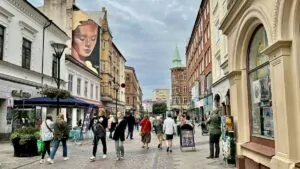

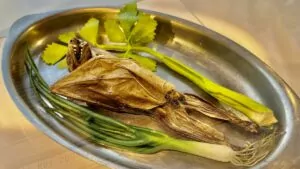
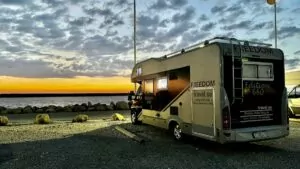
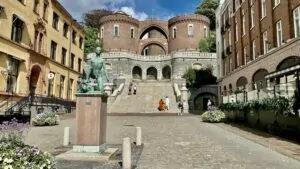
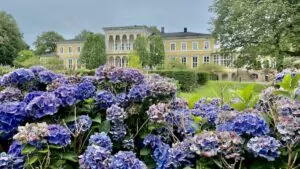
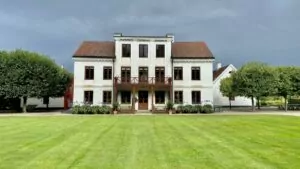
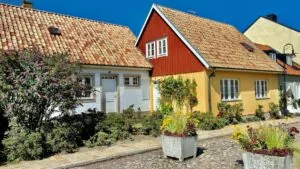
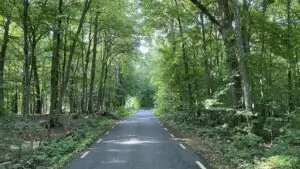
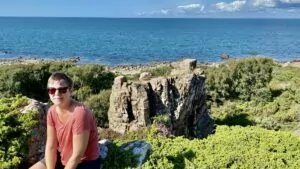
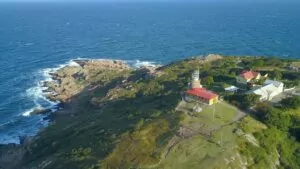
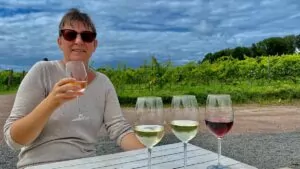
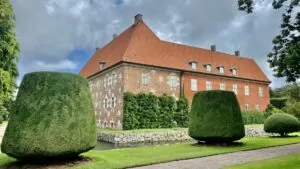
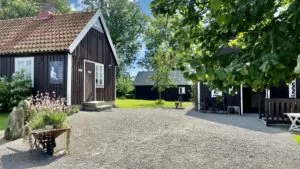
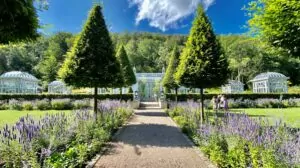
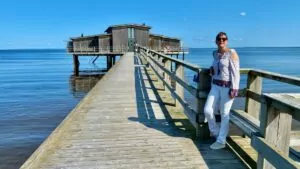
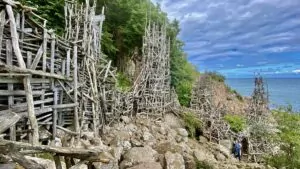

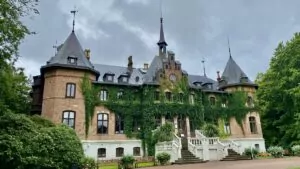
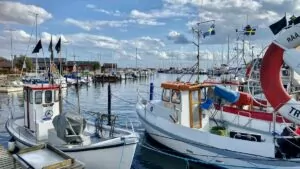
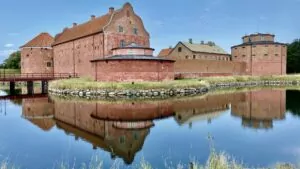
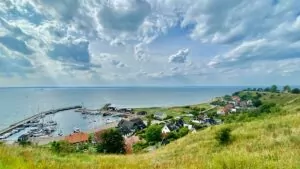
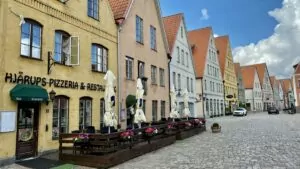
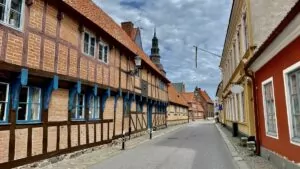
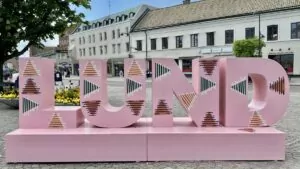
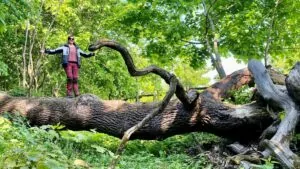
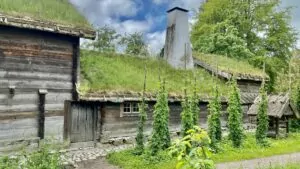
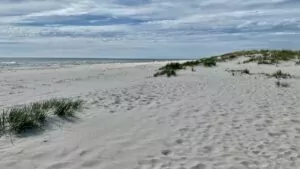
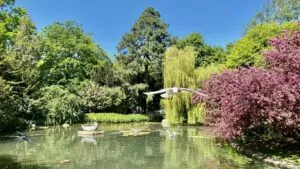
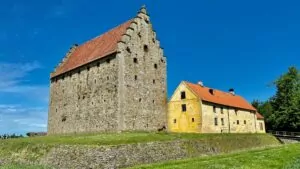
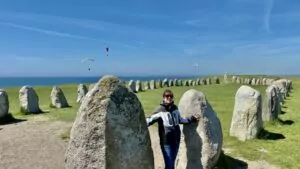
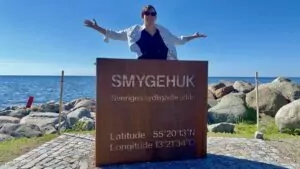
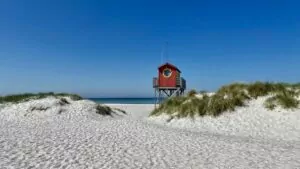
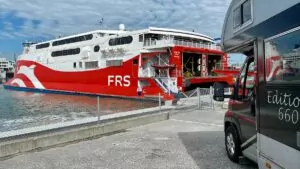
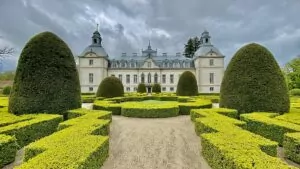
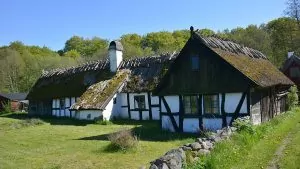
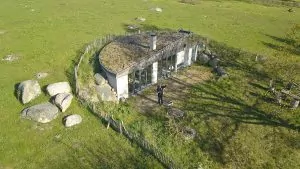
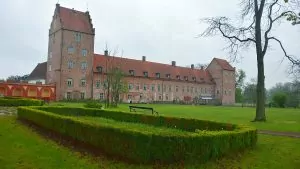
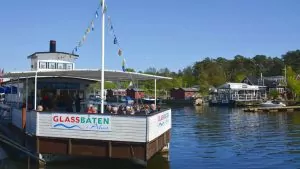
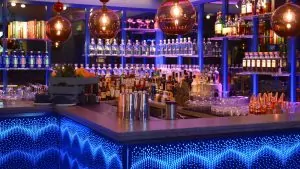
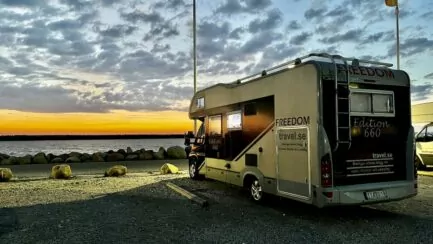
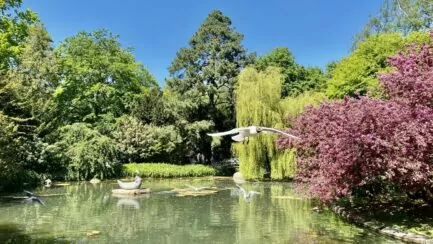
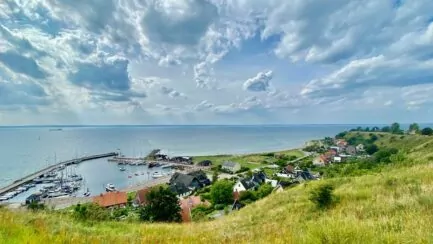
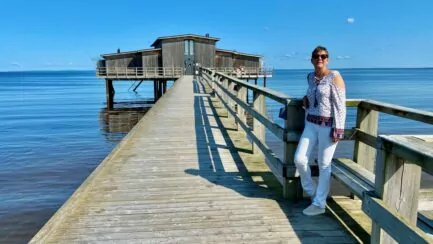
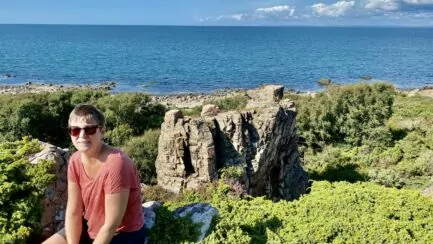
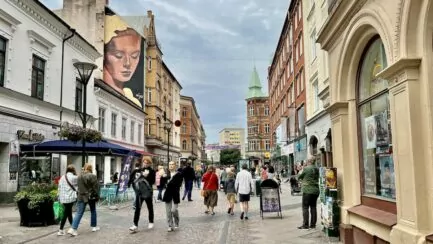



Monika says:
Sounds unlikely that you can see Öregrund, which is on the east coast, when bathing in Höganäs. 😉
Hugs Monika
22 August 2021 - 9:06
Helena says:
Haha, of course it should be Öresund!!! Corrected now! Thank you! 🙂
22 August 2021 - 11:31
diana's dreams says:
Lovely you have it, Höganäs is so nice hugs
22 August 2021 - 19:07
Helena says:
Isn't it nice here! Have a great time Diana!
23 August 2021 - 20:54
BP says:
It looks like you had Höganäs to yourselves. Quite empty. But guuuuuu how delicious the decorative tiles on the bridge were. Fantastically nice. Even the "graffiti" balconies/lofts were completely in my taste as well as the boat with the flowers.
22 August 2021 - 19:31
Helena says:
Aren't the tiles nice? We liked it a lot!
23 August 2021 - 20:55
Bobby Brandt says:
There is also another parking space for motorhomes called the banana pancake just outside Höganäs, you have to google it.
22 August 2021 - 19:57
Helena says:
Ah ok! Thanks for the tip!
23 August 2021 - 20:55
Ola Bergling says:
Can recommend Ställplats Bananpannkakan...nice host couple!
24 August 2021 - 17:59
Hasse says:
Höganäs is nice. At the pilot lookout just north of the sp you visited, there are many motorhomes. Nice bike path all the way up to Mölle, with nice stops. Kullaberg's vineyard and Holy smoke. The old factory is a market hall and the best hamburgers are at Garage. Baden is ok, but there are better along the coast upwards.
25 August 2021 - 8:18